Each issue includes:
Editor-in-Chief: Paul M. Gallo, Ed.D., FACSM, ACSM-CEP, ACSM-EP, ACSM-GEI, EIM ISSN: 1091-5397
Journal Impact Factor: 1.8

Paper of the Year
View the current and previous Paper of the Year selections and editorials covering the selected articles.
Editors Picks
Get the scoop from the best – ACSM’s Editors-in-Chief share their recommended reading each new issue.
![]()
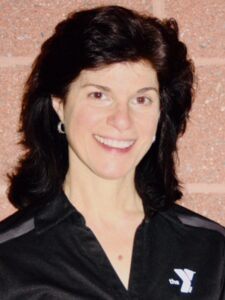 Grace T. DeSimone, BA, ACSM-CPT, ACSM-GEI is the wellness director for the Wyckoff Family YMCA in New Jersey. She is the editor for ACSM’s Resource Manual for the Group Exercise Instructor, (2011) and is the 2016 IDEA Health & Fitness Association Program Director of the Year. Grace is a certified Mental Health First Aid instructor.
Grace T. DeSimone, BA, ACSM-CPT, ACSM-GEI is the wellness director for the Wyckoff Family YMCA in New Jersey. She is the editor for ACSM’s Resource Manual for the Group Exercise Instructor, (2011) and is the 2016 IDEA Health & Fitness Association Program Director of the Year. Grace is a certified Mental Health First Aid instructor.
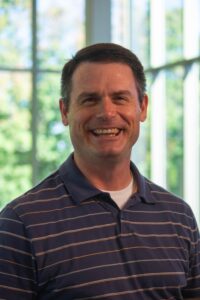 Charles J. Fountaine, PhD, FACSM, is a professor in the Department of Kinesiology at St. Olaf College in Northfield, MN.
Charles J. Fountaine, PhD, FACSM, is a professor in the Department of Kinesiology at St. Olaf College in Northfield, MN.
 Katie Smith, PhD, RDN, LD, FACSM, ACSM-EP, is an associate professor of Sport Science and Health Education at Simpson College in Indianola, IA. She is a registered dietitian and certified exercise physiologist. Her research interests span several facets of women’s health professionally, with expertise in prenatal lifestyle interventions to improve maternal and fetal health, and personally, as a mom to her four daughters. In her spare time, she enjoys traveling, reading, implementing mindful movement daily, and being active outdoors.
Katie Smith, PhD, RDN, LD, FACSM, ACSM-EP, is an associate professor of Sport Science and Health Education at Simpson College in Indianola, IA. She is a registered dietitian and certified exercise physiologist. Her research interests span several facets of women’s health professionally, with expertise in prenatal lifestyle interventions to improve maternal and fetal health, and personally, as a mom to her four daughters. In her spare time, she enjoys traveling, reading, implementing mindful movement daily, and being active outdoors.
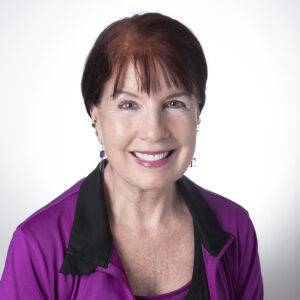 Mary M. Yoke, PhD, MA, MM, FACSM, EIM, is a full-time faculty member at the School for Health and Human Sciences at Indiana University Indianapolis in the Department of Kinesiology. Before her position in Indiana, she was an adjunct professor at Adelphi University for 22 years, where she authored or coauthored numerous group exercise research studies. She is the author of four fitness textbooks and one consumer book on happiness; she has presented in 18 countries and throughout the United States on a wide variety of health/fitness topics; and has obtained 24 certifications. Her research interests include behavior change, positive psychology, motivation, obesity, group fitness, and personal training efficacy.
Mary M. Yoke, PhD, MA, MM, FACSM, EIM, is a full-time faculty member at the School for Health and Human Sciences at Indiana University Indianapolis in the Department of Kinesiology. Before her position in Indiana, she was an adjunct professor at Adelphi University for 22 years, where she authored or coauthored numerous group exercise research studies. She is the author of four fitness textbooks and one consumer book on happiness; she has presented in 18 countries and throughout the United States on a wide variety of health/fitness topics; and has obtained 24 certifications. Her research interests include behavior change, positive psychology, motivation, obesity, group fitness, and personal training efficacy.
 Stella Lucia Volpe, PhD, RDN, FACSM, ACSM-CEP, is professor and head of the Department of Human Nutrition, Foods, and Exercise at Virginia Tech, Blacksburg, VA. Her degrees are in both Nutrition and Exercise Physiology; she also is an ACSM Certified Clinical Exercise Physiologist® and a registered dietitian. Dr. Volpe’s research focuses on obesity and diabetes prevention using traditional interventions, mineral supplementation, altering the environment to result in greater physical activity and healthy eating, as well as in sport nutrition. Dr. Volpe is president of ACSM (2024-2025), chair of the ACSM American Fitness Index, and is on the Board of Trustees for the Institute for the Advancement of Food and Nutrition Sciences. Dr. Volpe is an associate editor of ACSM’s Health & Fitness Journal®, the Translational Journal of the American College of Sports Medicine, and Exercise and Sport Sciences Reviews. She also is editor-in-chief for Current Nutrition Reports.
Stella Lucia Volpe, PhD, RDN, FACSM, ACSM-CEP, is professor and head of the Department of Human Nutrition, Foods, and Exercise at Virginia Tech, Blacksburg, VA. Her degrees are in both Nutrition and Exercise Physiology; she also is an ACSM Certified Clinical Exercise Physiologist® and a registered dietitian. Dr. Volpe’s research focuses on obesity and diabetes prevention using traditional interventions, mineral supplementation, altering the environment to result in greater physical activity and healthy eating, as well as in sport nutrition. Dr. Volpe is president of ACSM (2024-2025), chair of the ACSM American Fitness Index, and is on the Board of Trustees for the Institute for the Advancement of Food and Nutrition Sciences. Dr. Volpe is an associate editor of ACSM’s Health & Fitness Journal®, the Translational Journal of the American College of Sports Medicine, and Exercise and Sport Sciences Reviews. She also is editor-in-chief for Current Nutrition Reports.
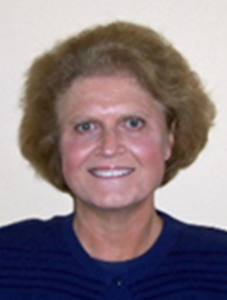 JoAnn M. Eickhoff-Shemek, PhD, FACSM, FAWHP, professor emeritus, Exercise Science at the University of South Florida and president of the Fitness Law Academy, LLC, is an internationally known author and speaker. For more than 35 years, her teaching and research have focused on fitness safety, legal liability, and risk management issues. Dr. Eickhoff-Shemek is the lead author of a new 2025 textbook titled Legal Toolkit for Health and Wellness Coaches and Managers. She also is the lead author of a legal/risk management textbook, Law for Fitness Managers and Exercise Professionals, and is the co-author of another textbook, Rule the Rules of Workplace Wellness Programs, published in 2020 and 2021, respectively.
JoAnn M. Eickhoff-Shemek, PhD, FACSM, FAWHP, professor emeritus, Exercise Science at the University of South Florida and president of the Fitness Law Academy, LLC, is an internationally known author and speaker. For more than 35 years, her teaching and research have focused on fitness safety, legal liability, and risk management issues. Dr. Eickhoff-Shemek is the lead author of a new 2025 textbook titled Legal Toolkit for Health and Wellness Coaches and Managers. She also is the lead author of a legal/risk management textbook, Law for Fitness Managers and Exercise Professionals, and is the co-author of another textbook, Rule the Rules of Workplace Wellness Programs, published in 2020 and 2021, respectively.
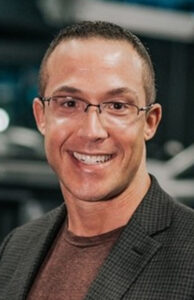 Michael Stack, BS, ACSM-EP, ACSM-EIM, ACSM-PAPHS, is the founder and CEO of Applied Fitness Solutions and Michigan Moves Coalition. He is a faculty lecturer for the University of Michigan’s School of Kinesiology as well as the creator and host of the Wellness Paradox Podcast, produced in conjunction with the University of Michigan. He is an exercise physiologist by training and a health entrepreneur, health educator, and fitness industry advocate by trade. He currently serves on ACSM’s Strategic Health Initiative Committee on Health Equity and as the Business Edge associate editor for ACSM’s Health & Fitness Journal®.
Michael Stack, BS, ACSM-EP, ACSM-EIM, ACSM-PAPHS, is the founder and CEO of Applied Fitness Solutions and Michigan Moves Coalition. He is a faculty lecturer for the University of Michigan’s School of Kinesiology as well as the creator and host of the Wellness Paradox Podcast, produced in conjunction with the University of Michigan. He is an exercise physiologist by training and a health entrepreneur, health educator, and fitness industry advocate by trade. He currently serves on ACSM’s Strategic Health Initiative Committee on Health Equity and as the Business Edge associate editor for ACSM’s Health & Fitness Journal®.
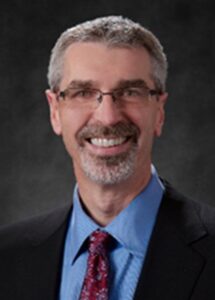 Nico P. Pronk, PhD, FACSM, FAWHP, is president of the HealthPartners Institute and chief science officer at HealthPartners in Minneapolis, Minnesota. Dr. Pronk is an affiliate full professor of health policy and management at the University of Minnesota School of Public Health. He is a past-president of the International Association for Worksite Health Promotion (IAWHP), co-author of the IAWHP Online Certificate Course, editor of ACSM’s Worksite Health Handbook, 2nd edition, and associate editor for ACSM’s Health & Fitness Journal®.
Nico P. Pronk, PhD, FACSM, FAWHP, is president of the HealthPartners Institute and chief science officer at HealthPartners in Minneapolis, Minnesota. Dr. Pronk is an affiliate full professor of health policy and management at the University of Minnesota School of Public Health. He is a past-president of the International Association for Worksite Health Promotion (IAWHP), co-author of the IAWHP Online Certificate Course, editor of ACSM’s Worksite Health Handbook, 2nd edition, and associate editor for ACSM’s Health & Fitness Journal®.
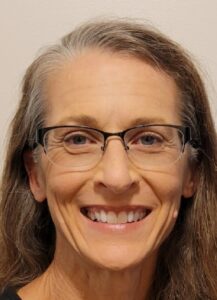 Barbara A. Bushman, PhD, FACSM, ACSM-CEP, ACSM-EP, ACSM-CPT, is faculty emeritus at Missouri State University. Dr. Bushman has authored articles related to menopause, factors influencing exercise participation, and deep water run training; she edited both the first and second editions of ACSM’s Complete Guide to Fitness & Health (Human Kinetics, 2011 and 2017), edited the Fitness Professional’s Handbook, 8th edition (Human Kinetics, 2025), and promotes health/fitness at www.Facebook.com/FitnessID.
Barbara A. Bushman, PhD, FACSM, ACSM-CEP, ACSM-EP, ACSM-CPT, is faculty emeritus at Missouri State University. Dr. Bushman has authored articles related to menopause, factors influencing exercise participation, and deep water run training; she edited both the first and second editions of ACSM’s Complete Guide to Fitness & Health (Human Kinetics, 2011 and 2017), edited the Fitness Professional’s Handbook, 8th edition (Human Kinetics, 2025), and promotes health/fitness at www.Facebook.com/FitnessID.
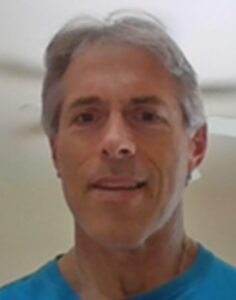 Peter Ronai, MS, FACSM, FCEPA, ACSM-CEP, ACSM-EP, EIM, is a clinical professor of exercise science in the Department of Physical Therapy and Human Movement Sciences at Sacred Heart University in Fairfield Connecticut. He is a Fellow of the American College of Sports Medicine (ACSM) and serves as the associate editor-in-chief of ACSM’s Health & Fitness Journal®, overseeing the journal’s annual themed issue and as the Do It Right column associate editor. He is a past president of the New England Chapter of ACSM and speaks and writes about tips and tools exercise professionals can access and apply to better serve their clients when developing exercise programs.
Peter Ronai, MS, FACSM, FCEPA, ACSM-CEP, ACSM-EP, EIM, is a clinical professor of exercise science in the Department of Physical Therapy and Human Movement Sciences at Sacred Heart University in Fairfield Connecticut. He is a Fellow of the American College of Sports Medicine (ACSM) and serves as the associate editor-in-chief of ACSM’s Health & Fitness Journal®, overseeing the journal’s annual themed issue and as the Do It Right column associate editor. He is a past president of the New England Chapter of ACSM and speaks and writes about tips and tools exercise professionals can access and apply to better serve their clients when developing exercise programs.
 Liz Hathaway, PhD, MPH, is a UC Foundation associate professor in Health and Human Performance (HHP) at the University of Tennessee at Chattanooga, TN. She teaches Health Behavior Change and Psychology of Sport & Exercise in the Exercise and Health Sciences undergraduate program and serves as the program coordinator for the Healthy Eating and Active Living Through HHP Residential Learning Community for HHP freshmen. Beginning fall of 2022, she decided to do the unthinkable and moved into a freshman residence hall to serve as a faculty-in-residence. Her interests include learning how to best motivate individuals, especially college students, to make lasting positive behavior change. Her dislikes include blaring fire alarms at 2 a.m.
Liz Hathaway, PhD, MPH, is a UC Foundation associate professor in Health and Human Performance (HHP) at the University of Tennessee at Chattanooga, TN. She teaches Health Behavior Change and Psychology of Sport & Exercise in the Exercise and Health Sciences undergraduate program and serves as the program coordinator for the Healthy Eating and Active Living Through HHP Residential Learning Community for HHP freshmen. Beginning fall of 2022, she decided to do the unthinkable and moved into a freshman residence hall to serve as a faculty-in-residence. Her interests include learning how to best motivate individuals, especially college students, to make lasting positive behavior change. Her dislikes include blaring fire alarms at 2 a.m.
 Nicole Mendola, MS, ACSM-CEP, ACSM-EP, ACSM-GEI, EIM, registered clinical exercise physiologist, is a full-time faculty member within the Exercise Science and Wellness department at CT State Norwalk, Norwalk, CT. She received her BS in Exercise Science and her MS in Clinical Exercise Physiology from James Madison University. Nicole currently is a member of ACSM’s Group Exercise Instructor Committee on Certification and Registry Boards, she holds the position of MAX! newsletter editor for the New England regional chapter of the American College of Sports Medicine and is an active member of the Clinical Exercise Physiology Association Membership Committee. Her passion for clinical exercise physiology and her interest in chronic disease and the aging population has influenced much of her research.
Nicole Mendola, MS, ACSM-CEP, ACSM-EP, ACSM-GEI, EIM, registered clinical exercise physiologist, is a full-time faculty member within the Exercise Science and Wellness department at CT State Norwalk, Norwalk, CT. She received her BS in Exercise Science and her MS in Clinical Exercise Physiology from James Madison University. Nicole currently is a member of ACSM’s Group Exercise Instructor Committee on Certification and Registry Boards, she holds the position of MAX! newsletter editor for the New England regional chapter of the American College of Sports Medicine and is an active member of the Clinical Exercise Physiology Association Membership Committee. Her passion for clinical exercise physiology and her interest in chronic disease and the aging population has influenced much of her research.
 Kristi M. King, PhD, CHES, is a professor in the Department of Health and Sport Sciences at the University of Louisville. Dr. King is the principal investigator on interdisciplinary research studies that focus on physical activity and public health. She is a Certified Health Education Specialist (CHES), a Commonwealth Institute of Kentucky Scholar, a University of South Carolina Physical Activity and Public Health research post-doctorate research fellow, and an America Walks, Walking College fellow. Dr. King serves the College as an associate editor for ACSM’s Health & Fitness Journal® and as a member of the Health and Science Policy Committee.
Kristi M. King, PhD, CHES, is a professor in the Department of Health and Sport Sciences at the University of Louisville. Dr. King is the principal investigator on interdisciplinary research studies that focus on physical activity and public health. She is a Certified Health Education Specialist (CHES), a Commonwealth Institute of Kentucky Scholar, a University of South Carolina Physical Activity and Public Health research post-doctorate research fellow, and an America Walks, Walking College fellow. Dr. King serves the College as an associate editor for ACSM’s Health & Fitness Journal® and as a member of the Health and Science Policy Committee.
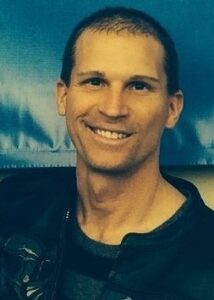 Paul Sorace, MS, FACSM, ACSM-CEP, is a clinical exercise physiologist in New Jersey. He is an associate editor for ACSM’s Health & Fitness Journal® and the clinical associate editor for ACSM’s Certification Review, 4th and 5th editions. Paul also has served on numerous ACSM Committees, including chair of the CCRB Publications Sub-Committee.
Paul Sorace, MS, FACSM, ACSM-CEP, is a clinical exercise physiologist in New Jersey. He is an associate editor for ACSM’s Health & Fitness Journal® and the clinical associate editor for ACSM’s Certification Review, 4th and 5th editions. Paul also has served on numerous ACSM Committees, including chair of the CCRB Publications Sub-Committee.
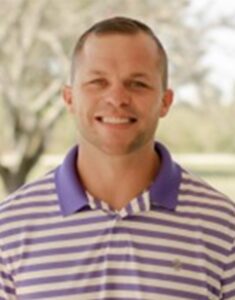 Heath M. Burton, PhD, is an associate professor in the Health Sciences Department at Furman University in Greenville, SC. As an exercise scientist and former collegiate athlete, he has a passion for exercise and sports. His research focuses on optimizing human performance through effective training and recovery strategies while also exploring the detrimental effects of physical inactivity on exercise responses.
Heath M. Burton, PhD, is an associate professor in the Health Sciences Department at Furman University in Greenville, SC. As an exercise scientist and former collegiate athlete, he has a passion for exercise and sports. His research focuses on optimizing human performance through effective training and recovery strategies while also exploring the detrimental effects of physical inactivity on exercise responses.
6510 Telecom Dr.
Suite 200
Indianapolis, IN 46278
317-637-9200
317-634-7817
ACSM’s National Center hours are 8 a.m. to 5 p.m. ET Monday through Friday.
© ACSM. All Rights Reserved.